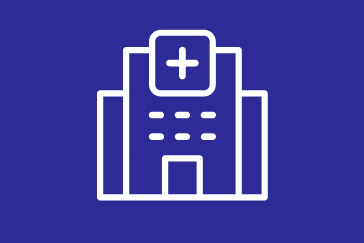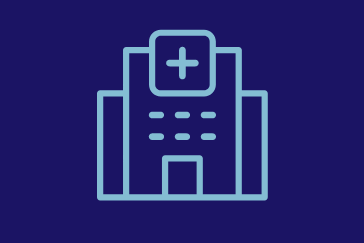
Reducing the Use of Restraints and Assessment Tools in Post Acute Care Settings
The use of restraints is considered an intrusive and dangerous intervention used today. The risk of using restraints far outweigh the benefits of using restraints. Therefore, the use of restraints should be a last resort when managing patients who need protecting or have the potential to hurt themselves as well as others. The Joint Commission and the Centers for Medicare and Medicate Services are also known as CMS have standards and regulations regarding restraint use and have created programs to assist organizations and healthcare personnel in implementing a restraint-free environment. This course is designed to provide you, as healthcare workers in the post-acute care setting, the knowledge to reduce the use of restraints.
Reducing the Use of Restraints and Assessment Tools in Post Acute Care Settings
The use of restraints is considered an intrusive and dangerous intervention used today. The risk of using restraints far outweigh the benefits of using restraints. Therefore, the use of restraints should be a last resort when managing patients who need protecting or have the potential to hurt themselves as well as others. The Joint Commission and the Centers for Medicare and Medicate Services are also known as CMS have standards and regulations regarding restraint use and have created programs to assist organizations and healthcare personnel in implementing a restraint-free environment. This course is designed to provide you, as healthcare workers in the post-acute care setting, the knowledge to reduce the use of restraints.

Medications: Drug Regimen Review
The Centers for Medicare and Medicaid Services (CMS) is offering a web-based training that provides an overview of the assessment and coding of the Drug Regimen Review (DRR) standardized patient assessment data elements (SPADEs) found in the Medications Section of the guidance manual. A brief discussion of the cross-setting quality measure (QM) ??rug Regimen Review Conducted with Follow-Up for Identified Issues??will also be included. This course is intended for providers in Home Health Agencies (HHAs), Inpatient Rehabilitation Facilities (IRFs), Long-Term Care Hospitals (LTCHs), and Skilled Nursing Facilities (SNFs).
This course contains a description of the intent and rationale, assessment considerations, and coding principles for the Drug Regimen Review (DRR) items. A brief overview of the cross-setting Drug Regimen Review QM, ??rug Regimen Review Conducted with Follow-Up for Identified Issues,??will be provided. Resources available to assist post-acute care (PAC) providers in understanding and training others in the application of related coding guidance will be reviewed. Throughout the course, participants will engage in interactive exercises to test knowledge and application of coding principles.
Medications: Drug Regimen Review
The Centers for Medicare and Medicaid Services (CMS) is offering a web-based training that provides an overview of the assessment and coding of the Drug Regimen Review (DRR) standardized patient assessment data elements (SPADEs) found in the Medications Section of the guidance manual. A brief discussion of the cross-setting quality measure (QM) ??rug Regimen Review Conducted with Follow-Up for Identified Issues??will also be included. This course is intended for providers in Home Health Agencies (HHAs), Inpatient Rehabilitation Facilities (IRFs), Long-Term Care Hospitals (LTCHs), and Skilled Nursing Facilities (SNFs).
This course contains a description of the intent and rationale, assessment considerations, and coding principles for the Drug Regimen Review (DRR) items. A brief overview of the cross-setting Drug Regimen Review QM, ??rug Regimen Review Conducted with Follow-Up for Identified Issues,??will be provided. Resources available to assist post-acute care (PAC) providers in understanding and training others in the application of related coding guidance will be reviewed. Throughout the course, participants will engage in interactive exercises to test knowledge and application of coding principles.

Navigating the Changing OSHA Emergency Temporary Standard & CMS Vaccine Mandates
This webinar provides an overview of the Covid-19 Vaccine Mandate for employers in OSHAs Emergency Temporary Standard. It discusses the Condition of Participation in Medicare and Medicaid as well as recommended strategies for ensuring compliance and avoiding penalties.
Navigating the Changing OSHA Emergency Temporary Standard & CMS Vaccine Mandates
This webinar provides an overview of the Covid-19 Vaccine Mandate for employers in OSHAs Emergency Temporary Standard. It discusses the Condition of Participation in Medicare and Medicaid as well as recommended strategies for ensuring compliance and avoiding penalties.

OIG HEAT Provider Training Webcast: Overview of Centers for Medicare and Medicaid Services
This course provides information on the Office of Inspector General Health Care Fraud Prevention and Enforcement Action Team (OIG HEAT) training webcast for the Centers for Medicare and Medicaid Services (CMS). An overview of CMS will be covered, and specific details related to program requirements, qualifications, and the process followed when fraud is suspected will be discussed.
OIG HEAT Provider Training Webcast: Overview of Centers for Medicare and Medicaid Services
This course provides information on the Office of Inspector General Health Care Fraud Prevention and Enforcement Action Team (OIG HEAT) training webcast for the Centers for Medicare and Medicaid Services (CMS). An overview of CMS will be covered, and specific details related to program requirements, qualifications, and the process followed when fraud is suspected will be discussed.

Medicare Parts C and D General Compliance Training
This training assists Medicare Parts C and D plan Sponsors employees, governing body members, and their first-tier, downstream, and related entities (FDRs) to satisfy their annual general compliance training requirements in the regulations and sub-regulatory guidance at:
-42 Code of Federal Regulations (CFR) Section 422.503(b)(4)(vi)(C)
-42 CFR Section 423.504(b)(4)(vi)(C)
-Section 50.3 of the Compliance Program Guidelines (Chapter 9 of the Medicare Prescription Drug Benefit Manual and Chapter 21 of the Medicare Managed Care Manual)
-The Downloads section of the CMS Compliance Program Policy and Guidance webpage
Completing this training in and of itself does not ensure a Sponsor has an effective Compliance Program. Sponsors and their FDRs are responsible for establishing and executing an effective compliance program according to the CMS regulations and program guidelines.
Medicare Parts C and D General Compliance Training
This training assists Medicare Parts C and D plan Sponsors employees, governing body members, and their first-tier, downstream, and related entities (FDRs) to satisfy their annual general compliance training requirements in the regulations and sub-regulatory guidance at:
-42 Code of Federal Regulations (CFR) Section 422.503(b)(4)(vi)(C)
-42 CFR Section 423.504(b)(4)(vi)(C)
-Section 50.3 of the Compliance Program Guidelines (Chapter 9 of the Medicare Prescription Drug Benefit Manual and Chapter 21 of the Medicare Managed Care Manual)
-The Downloads section of the CMS Compliance Program Policy and Guidance webpage
Completing this training in and of itself does not ensure a Sponsor has an effective Compliance Program. Sponsors and their FDRs are responsible for establishing and executing an effective compliance program according to the CMS regulations and program guidelines.

ASC Billing Compliance
Ambulatory surgery centers (ASCs) provide outpatient services to individuals. In order to bill for their services, ASCs have to qualify and form an agreement with the Centers for Medicare and Medicaid Services. This course will cover what services are covered and billing guidelines for ASCs. Course expiration date: 5/6/2026
ASC Billing Compliance
Ambulatory surgery centers (ASCs) provide outpatient services to individuals. In order to bill for their services, ASCs have to qualify and form an agreement with the Centers for Medicare and Medicaid Services. This course will cover what services are covered and billing guidelines for ASCs. Course expiration date: 5/6/2026

CMS SNF QRP: Section GG: Functional Abilities and Goals
The Centers for Medicare and Medicaid Services (CMS) is offering an updated web-based training series on the assessment and coding of Section GG. This training is intended for providers in the following care settings: Home Health Agencies (HHAs), Inpatient Rehabilitation Facilities (IRFs), Long-Term Care Hospitals (LTCHs), and Skilled Nursing Facilities (SNFs).
This is the first of three courses in this training series. This training provides an overview of the patient/resident assessment instrument guidance across post-acute care (PAC) settings for the coding of the items in Section GG, Functional Abilities and Goals. These courses contain a description of the item intent and rationale, steps for assessment, and coding principles for the self-care and mobility items. Resources available to assist PAC providers in understanding and training others in the application of related coding guidance will be reviewed. This course, Understanding Prior Functioning and Prior Device Use, includes interactive exercises to test your knowledge related to the assessment guidance and coding of GG0100 and GG0110.
CMS SNF QRP: Section GG: Functional Abilities and Goals
The Centers for Medicare and Medicaid Services (CMS) is offering an updated web-based training series on the assessment and coding of Section GG. This training is intended for providers in the following care settings: Home Health Agencies (HHAs), Inpatient Rehabilitation Facilities (IRFs), Long-Term Care Hospitals (LTCHs), and Skilled Nursing Facilities (SNFs).
This is the first of three courses in this training series. This training provides an overview of the patient/resident assessment instrument guidance across post-acute care (PAC) settings for the coding of the items in Section GG, Functional Abilities and Goals. These courses contain a description of the item intent and rationale, steps for assessment, and coding principles for the self-care and mobility items. Resources available to assist PAC providers in understanding and training others in the application of related coding guidance will be reviewed. This course, Understanding Prior Functioning and Prior Device Use, includes interactive exercises to test your knowledge related to the assessment guidance and coding of GG0100 and GG0110.

Management of Heart Failure
Heart failure, involving the loss of the hearts ability to pump blood efficiently, is a common condition that affects people of all ages, from children to the elderly. It is the most common diagnosis in Medicare-age hospital patients. One in eight deaths in the U.S. has heart failure as a contributing cause. Western lifestyle habits have contributed to the increasing incidence of heart failure, along with increasing expenditures devoted to care of heart failure patients. This course provides an overview of heart failure and discusses the prevalence, assessment and management of this disease, along with its health, social and economic consequences.
Management of Heart Failure
Heart failure, involving the loss of the hearts ability to pump blood efficiently, is a common condition that affects people of all ages, from children to the elderly. It is the most common diagnosis in Medicare-age hospital patients. One in eight deaths in the U.S. has heart failure as a contributing cause. Western lifestyle habits have contributed to the increasing incidence of heart failure, along with increasing expenditures devoted to care of heart failure patients. This course provides an overview of heart failure and discusses the prevalence, assessment and management of this disease, along with its health, social and economic consequences.

Identification and Reporting of Critical Incidents
Course overview
This course reviews the foundational concepts around the definition and categorization of critical incidents, as well as reporting requirements as specified by the Centers for Medicare and Medicaid Services (CMS) and guidance issued by the Joint Commission. The course provides practical examples of critical incidents, and orients the learner to the ways in which critical incidents impact patient outcomes in healthcare settings. While CMS requires States to implement an incident reporting system to protect the health and welfare of the Medicaid beneficiaries who receive services in community-based settings or nursing facilities, critical incident reporting protocols and processes may vary by state.
Goal
This course is designed to equip health professionals with knowledge of the foundational standards for identification and reporting of critical incidents.
Identification and Reporting of Critical Incidents
Course overview
This course reviews the foundational concepts around the definition and categorization of critical incidents, as well as reporting requirements as specified by the Centers for Medicare and Medicaid Services (CMS) and guidance issued by the Joint Commission. The course provides practical examples of critical incidents, and orients the learner to the ways in which critical incidents impact patient outcomes in healthcare settings. While CMS requires States to implement an incident reporting system to protect the health and welfare of the Medicaid beneficiaries who receive services in community-based settings or nursing facilities, critical incident reporting protocols and processes may vary by state.
Goal
This course is designed to equip health professionals with knowledge of the foundational standards for identification and reporting of critical incidents.